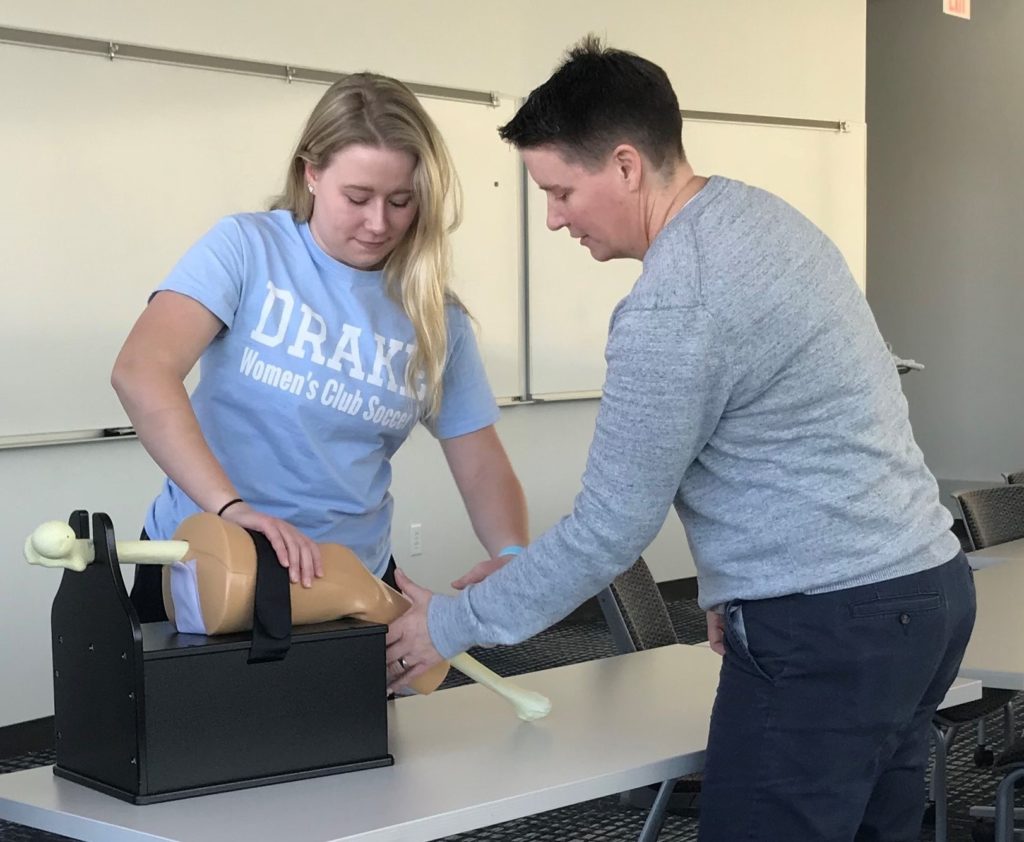When Megan Brady, assistant professor of athletic training, learned about knee injuries in her own education, she along with other athletic trainers, physical therapists, and medical students had to wait to learn about diagnostic tests until a patient was seen who had suffered a knee injury. As she became an educator, she realized that a better solution would be to create a tool that would allow students and practitioners to learn how to diagnose knee injuries in a safe and non-threatening environment before seeing the injuries in real patients. She set out to develop a model that would do just that and has spent the last several years developing and testing the model. Out of that work, the Brady Knee was developed and is making a difference in increasing correct diagnoses of knee injuries.
The Brady Knee will aid students in assessing common injuries in ligaments, such as the anterior cruciate ligament (ACL). While the ACL is one of four main ligaments in the knee, ACL tears are one of the most common knee injuries seen in the general population. The Centers for Disease Control reports that 250,000 people suffer from acute ACL tears annually.

The Lachman test, which athletic training, physical therapy, and medical students are expected to be able to perform upon graduation, is the most specific and reliable clinical ACL injury test. In order to be considered proficient, clinicians must be able to detect a 3 mm difference between the patient’s injured and uninjured knee. This requires practice on intact, partially torn, and completely torn ligaments. However, students are not always afforded the opportunity to practice on these varying degrees of ACL integrity during their education. The Brady Knee changes that as the model can provide students with a model to learn the Lachman test while lessening concern about potential harm to patients. Allowing students and novice clinicians the opportunity to practice on the Brady Knee could potentially lead to increased Lachman test proficiency, which translates to fewer misdiagnosed ACL tears and improved patient outcomes. This also allows students the opportunity to develop their knowledge and skills by practicing this assessment at any time in a simulated environment.
The Brady Knee will be an asset to multiple disciplines across the healthcare field as well as academic labs and classrooms. “The Brady Knee fills a gap that has been present in athletic training education. Educational research indicates that students acquire skills faster through experiential education, which has been my own experience as an educator.” explained Dr. Nate Newman, Director of Drake’s Athletic Training program. “This knee model allows us to bring experiential education into the classroom with the result being more skilled athletic trainers ready to provide better patient care from day one of their career.”
Although the ACL is the most common knee ligament that endures injury, diagnostic tests for additional ligaments will be added in the future so students can gain even more experience in assessing knee injuries.
Gone are the days of waiting for knee injuries to be seen in order for teaching to occur. Thanks to the Brady Knee, the learning occurs before the knee injuries are seen.

